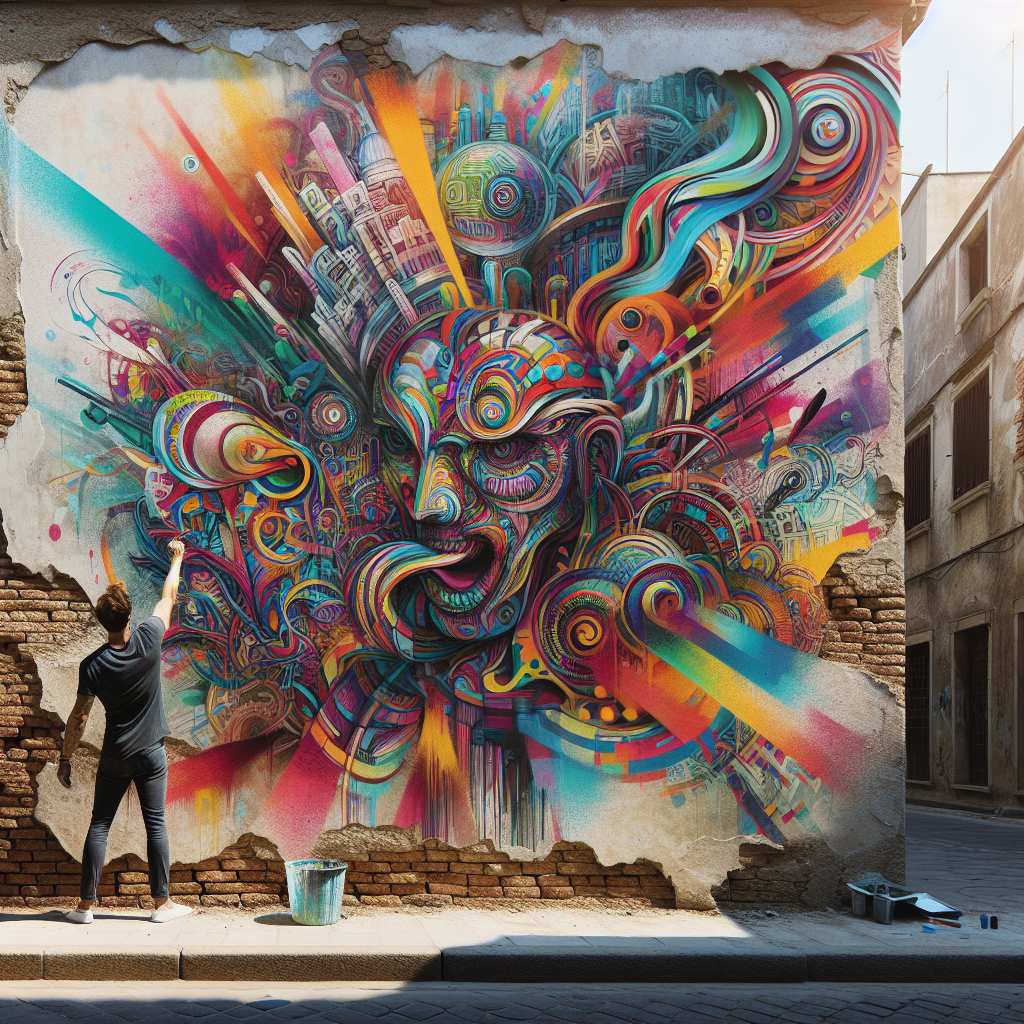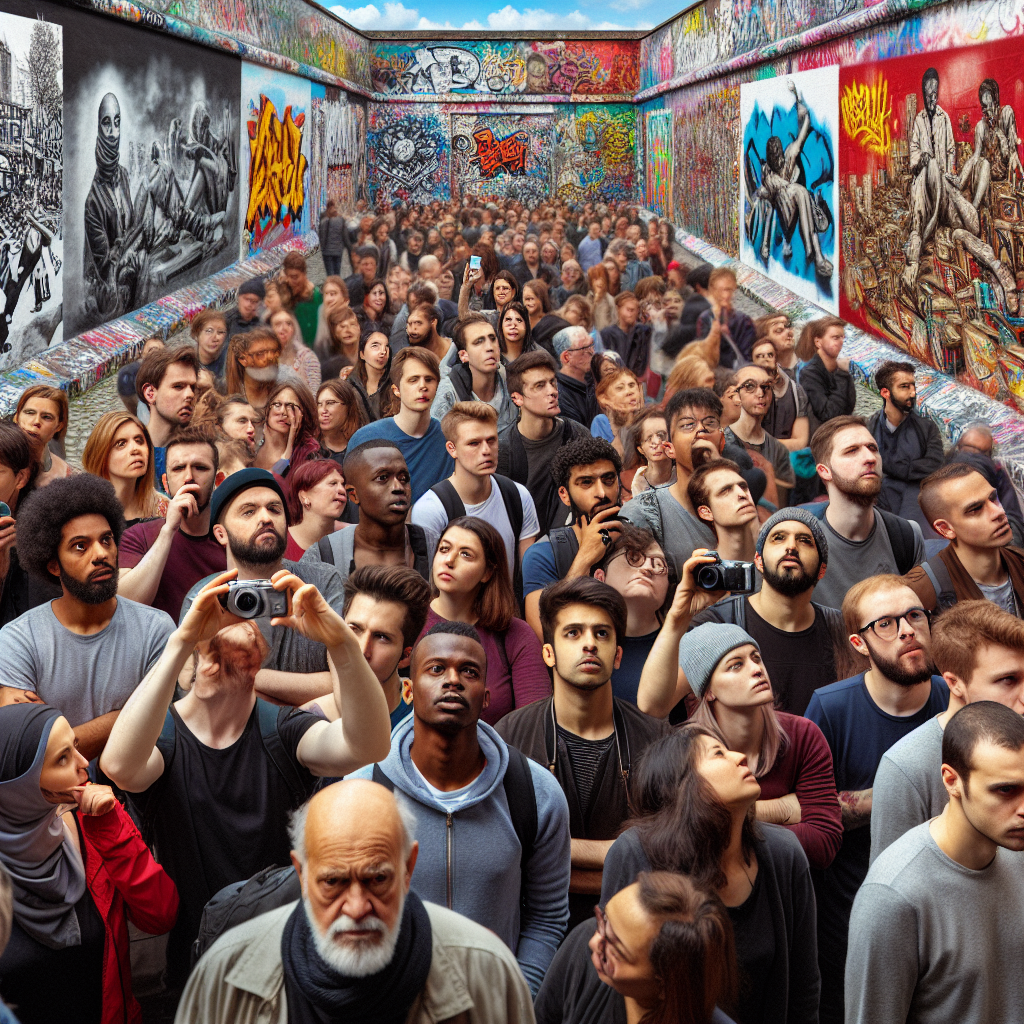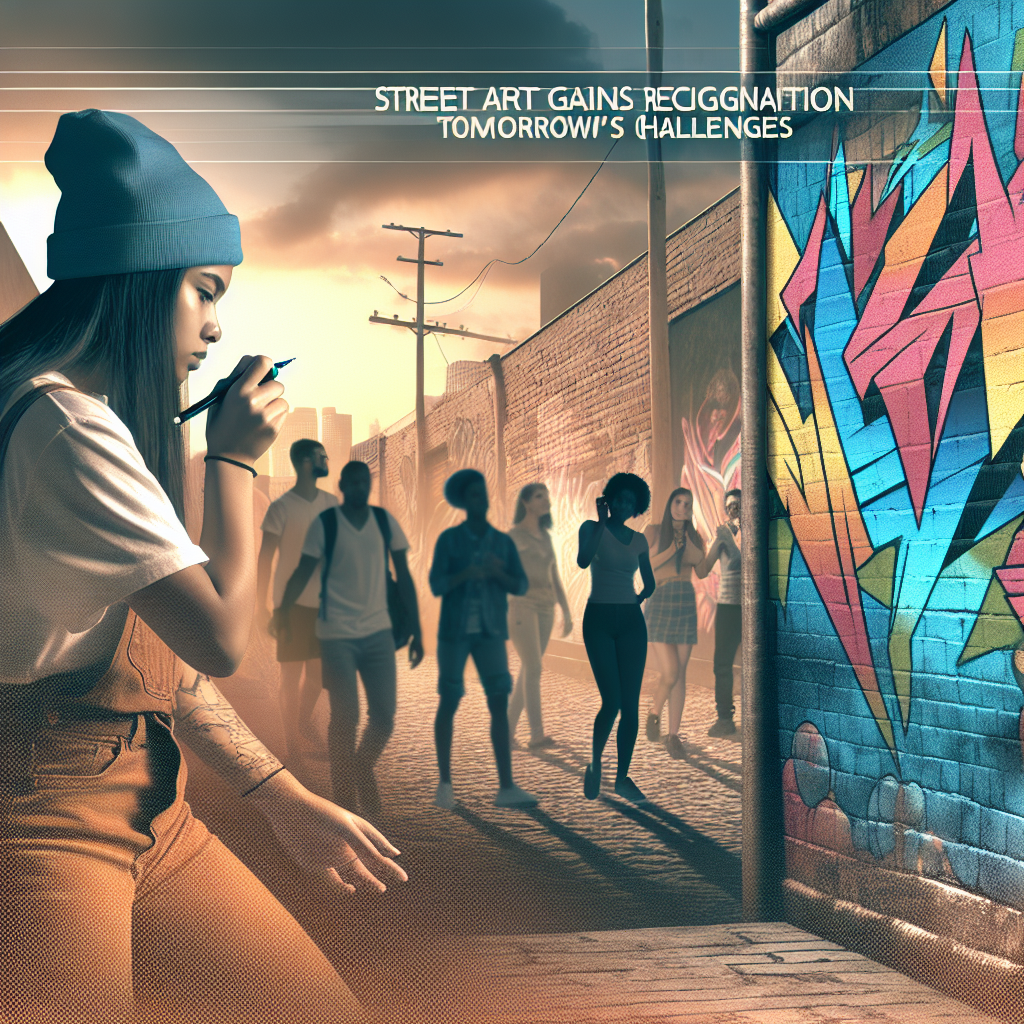Just in: The story behind the headlines – From dank alleys to world-renowned museums. In today’s breaking news, we embark on a journey through a transformative era of visual culture where graffiti-ridden streets have evolved into galleries for passionate creators. The street art revolution that started as an act of rebellion is now gaining global recognition.
Barely half a century ago, society cast aside these spray-painted walls as nothing more than visual noise—a blight on our cities’ neat facades. Yet this rogue form of expression has risen from the shadows to capture humanity’s imagination in remarkable ways. But what challenges does this newfound acceptance present? How does it impact us scientifically and culturally?
Research Question
The focus of this study was simple – To understand the implications of globally acknowledging street art contributions from both societal and scientific perspectives.

Methodology
We employed mixed methodologies involving quantitative surveys across various demographics coupled with qualitative interviews capturing anecdotal experiences of artists and observers alike.
Key Findings
The results were profound! Street-art boasts a significant influence over people’s emotions—creating connections between viewers & dwellers contributing towards local identities while also fostering social inclusivity.
Scientific Significance
Psychology validates that whilst viewing street art sparks neural pathways linked with inspiration & creativity; creating it enforces fine motor skills while honing spatial thinking abilities—an asset in STEM fields!This aligns with cognitive science theories called embodied cognition, asserting our mind’s deep-rooted connections with the environments we interact in.

Practical Applications
With proper nurturing, these skills can have extensive applications, promoting innovative solutions for tomorrow’s challenges. Cities are adapting by transforming derelict spaces into legal art hubs thereby increasing tourism and local economy.
Expert Reactions
The artistic community hails this recognition as a significant step forward; however academics caution against potential commodification impacting its authenticity.
Future Research
Avenues like examining how street art affects mental health or mapping city planning considering its transformative effects are unchartered territories worth exploration.Societal Impact
The societal implications are vast. Empowering marginalized voices to drive cultural narratives while beautifying urban landscapes – changing perceptions about “who” is deemed an artist & “what” constitutes as art.Ethical Considerations
Despite flourishing appreciation, ethical dilemmas persist regarding vandalism vs. self-expression debate and ownership rights over public spaces – demanding comprehensive legislation for better delineation.
In conclusion, broader implications of this movement extend beyond just redefining artscape—it encapsulates social reform sparking creativity whilst challenging normative thinking—proving that even the most rebellious forms of expression can transform into powerful catalysts for change in unexpected ways.

